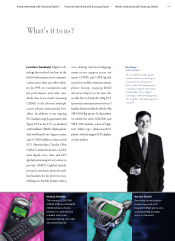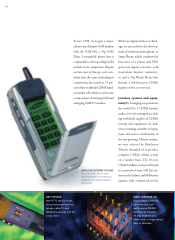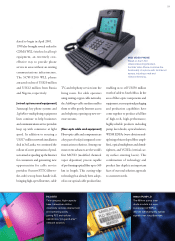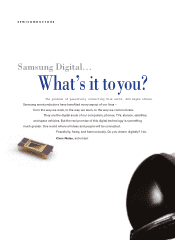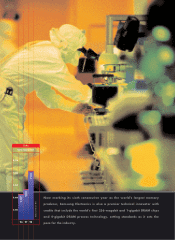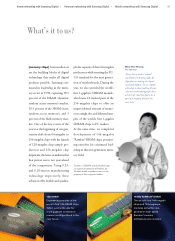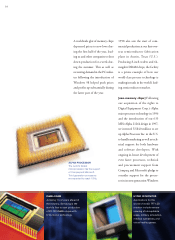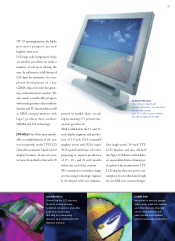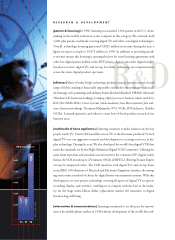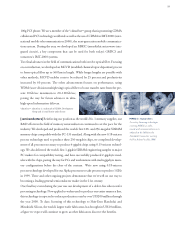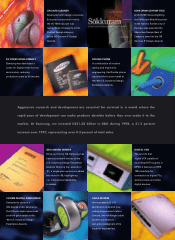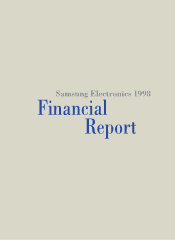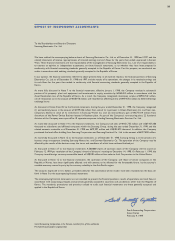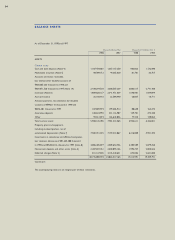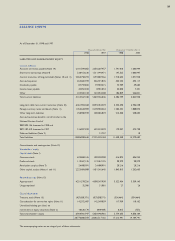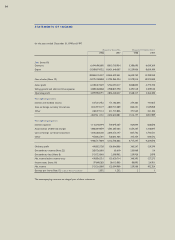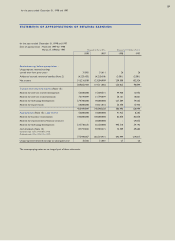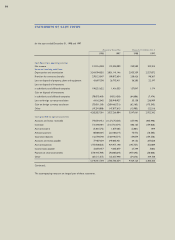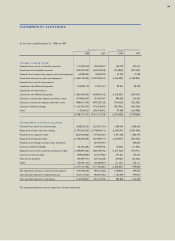Samsung 1998 Annual Report Download - page 30
Download and view the complete annual report
Please find page 30 of the 1998 Samsung annual report below. You can navigate through the pages in the report by either clicking on the pages listed below, or by using the keyword search tool below to find specific information within the annual report.
100g PCS phone. We are a member of the *cdmaOneTM group that is promoting CDMA
cellular and PCS technology worldwide as well as the use of CDMA in IMT-2000 (inter-
national mobile telecommunication-2000), the next-generation mobile communica-
tions system. During the year, we developed an MMIC (monolithic microwave inte-
grated circuit), a key component that can be used for both today’s GMPCS and
tomorrow’s IMT-2000 systems.
Two final advances in the field of communications both involve optical fiber. Focusing
on cost reduction, we developed an MCVD (modified chemical vapor deposition) process
to form optical fiber up to 360 km in length. While longer lengths are possible with
other methods, MCVD enables costs to be reduced by 25 percent and productivity
increased by 60 percent. The other advancement focuses on performance, using
WDM (wave division multiplexing) optical fiber to boost transfer rates from the pre-
sent 10Gb/sec maximum to 20~100Gb/sec,
paving the way for future advances in ultra-
high-speed information delivery.
[semiconductors] Reinforcing our position as the world’s No. 1 memory supplier, our
R&D efforts in the field of memory semiconductors continued to set the pace for the
industry. We developed and produced the world’s first 128- and 256-megabit SDRAM
memory chips compatible with the PC-133 standard. Along with the new 0.18-micron
process technology used to produce these 256-megabit chips, we completed develop-
ment of all processes necessary to produce 4-gigabit chips using 0.13-micron technol-
ogy. We also delivered the world’s first 1-gigabit SDRAM engineering samples to major
PC makers for compatibility testing, and have successfully produced 2-gigabyte mod-
ules with the chips, paving the way for PCs and workstations with multi-gigabyte mem-
ory configurations before the close of the century. We’re now using 0.18-micron
process technology developed for our Alpha processors to take processor speeds to 1GHz
in 1999. These and other ongoing projects demonstrate that we’re well on our way to
becoming a leading general semiconductor maker in the 21st century.
One final key event during the year was our development of a defect-free silicon wafer
processing technology. Now applied to wafers used to produce our entire memory line,
this technology is expected to reduce production costs by over US$200 million through
the year 2000. To date, licensing of this technology to Shin-Etsu Handodai and
Mitsubishi Silicon, the world’s largest wafer fabricators, has brought in US$10 million,
a figure we expect will continue to grow as other fabricators discover the benefits.
29
*cdmaOneTM: cdmaOne is a trademark of CDMA Development
Group and is issued herein under license
MPEG-2 researchers
Seven key Samsung technologies
covering MPEG-2, video,
sound, and communications were
adopted at the Multimedia
Standards Committee meeting
held in Ireland in July 1998.


